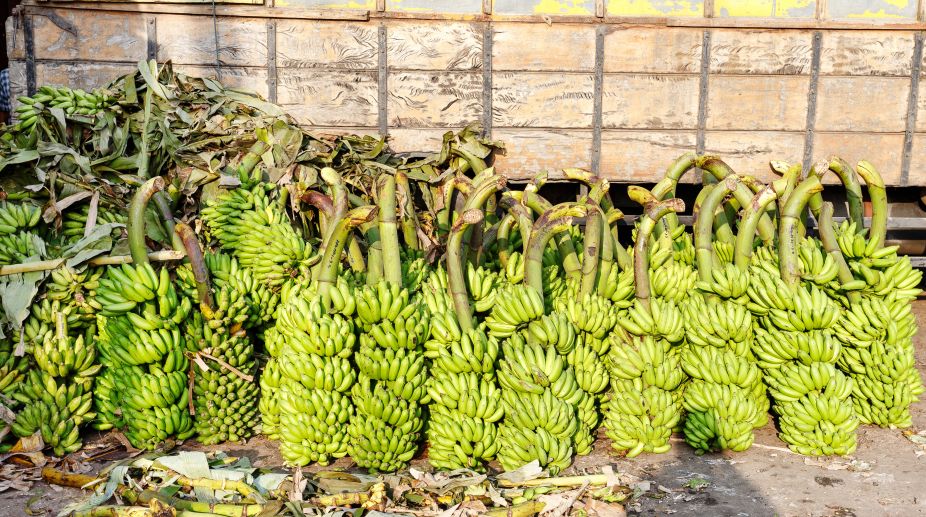Bananas, avocados, salmon may cut high-salt effect in women
The study included 24,963 participants (11,267 men and 13,696 women). The average age was 59 years for men and 58 years for women.

(Photo: Getty Images)
In Never Out of Season, published in March, author Rob Dunn — a biologist at North Carolina State University, US — uses the banana as an example and explains the desire for consistency in a particular product, which often gets ignored in the larger picture. Once upon a time there were all sorts of bananas. In recent decades commercially available bananas have largely been of the Cavendish variety.
They are “genetically identical” and susceptible to an “evolved version” of the pathogen (a pathogen is a bacterium, virus or other microrganism, that can cause disease). This evolved version of a pathogen is what destroyed Gros Michel bananas, which was afflicted by fungus, in plantations of Central America.
Advertisement
There is belief that artificial banana flavour tastes “fake” because it was intended to mimic the flavour of the Gros Michel rather than the Cavendish banana. This forms the prelude of an example of humanity dabbling with plants without considering the larger picture and is essentially the focus of Dunn’s remarkable narrative.
Advertisement
The agricultural revolution that has made food available in abundance, all over the world, could be responsible for the destruction of many crops. We are in the midst of a paradox because when we grow food, the supply is actually jeopardised like that of the Gros Michel banana. This is a syndrome, which Dunn exemplifies further by delving into history, when the same action of messing with nature confronted China with disaster. In 1958, Mao Zedong waged a war against vermins, which were destroying granaries in China. He exterminated, in two days, fleas, flies, rats and sparrows. Their government recorded 48,695 kilograms of flies, 930,486 rats and 1,367,440 sparrows. Birds like sparrows do not just eat grain; they also consume a range of pests. With the removal of predators, the pests devoured the harvest. That resulted in a famine in China, killing millions of people.
Dunn substantiates his theories and findings by highlighting the Irish potato famine that occurred from1845 to 1849. Irish farmers used the plow and adopted monoculture with barely any genetic variation between plants. What occurred in reality was that disease began engulfing one field after another, which then engulfed all fields of the same crop, since the potato fields were adjoining one another.
This form of monoculture emulated the age old adage, “Don’t put all your eggs into one basket”. The practice resulted in all areas, under potato cultivation, being afflicted by blight, a fungal disease. Thus arose a famine, which paradoxically affected mainly the potato crop — the staple food of the Irish.
Yet about 300,000 tons of grain was annually exported between 1846 and 1848, with the Irish famine at its peak. Charles Trevelyan, assistant secretary to the treasury, wrote about curtailing the population of Ireland and expressed these inexplicable thoughts, “The Irish famine is a direct stroke of an all wise and all merciful providence.” Such actions by humanity have been explained by Dunn, who elaborates that the human race is in trouble by depleting the number of species of staple crops, which are the most basic of our foodstuffs like wheat, rice, corn or cassava. Cassava provides the greatest number of calories within the African diet. It is a highly productive species and efficient pesticides have been created for this crop’s protection.
That said, pests “learn” how to combat the pesticide and that culminates in crop failure or at worse, famine. Dunn narrates his travels around the world and investigates successes and failures of efforts by farmers, synchronising these visits with scientists, to study and reverse natural setbacks against crops. He describes a remarkable policy, where wasps were introduced to kill mealy bugs that were destroying cassava in Africa.
He praises the Russians, who during World War II, gave up their lives to protect a seed bank in Leningrad. Dunn’s account conveys a clarion call, but also assures humanity that it is possible to reverse this way of cultivating plants that sustain us. Let us not ignore the agricultural sectors whose leaders have been perpetuating a sustainable policy for decades.
The expanse of tea estates occupy a significant area and while the amount of tea used in the preparation of a single cup may seem almost negligible, over four million tons of tea is produced annually across the world. As a beverage, it is a natural drink in its simplest form, comprising dried tea leaves. To highlight companies producing tea without harming the environment, it will be relevant to discern how the largest in the world, the Williamson Magor Group, has been adhering to policies which, in turn, harmonise with nature.
That includes organic forms of cultivation, focusing on Rainforest Alliance certification, using degradable packing material, thus caring for people and the planet. The BM Khaitan-led company tries to leave no stone unturned in a bid to protect the earth. PK Murari of Williamson Magor, stationed in Assam, empathically encourages vermicompost with earthworms that fertilise the soil and add porosity thereby giving the earth a friable texture.These precepts give credence to the larger picture, which Dunn has articulated in his book.
Advertisement